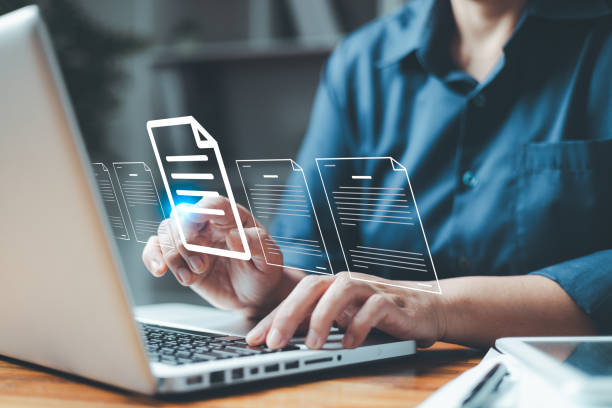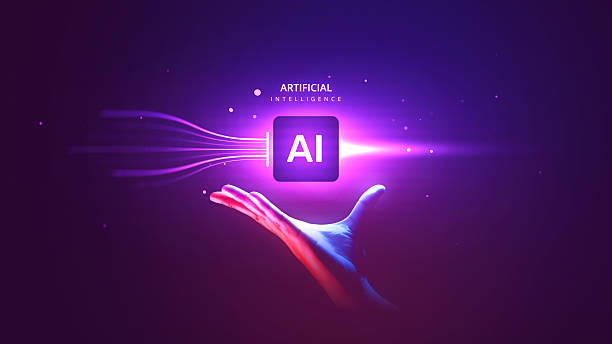Introduction to On-Page SEO and its Importance in the Digital World

In this digital age, a successful online presence is vital for any business.
One of the most important pillars of this presence is #SEO (Search Engine Optimization), which helps your website appear in the search results of Google and other search engines.
But what exactly is On-Page SEO? On-Page SEO, also known as in-page optimization, refers to a set of actions and techniques applied directly to your website pages to improve their ranking in search results.
These actions include optimizing content, site structure, keywords, and internal technical elements of the page.
Unlike Off-Page SEO, which relates to activities outside the site such as link building, On-Page SEO is entirely within your control and provides more room for maneuvering to improve the site’s status.
The importance of On-Page SEO is such that without it, even with the best content and product, you might never be discovered by your target audience.
Search engines like Google rank websites based on multiple factors, many of which are directly related to On-Page SEO.
Therefore, a comprehensive On-Page SEO strategy not only helps you achieve higher rankings but also drives more organic traffic to your website.
This traffic consists of users who are actively searching for your products or services, and their likelihood of converting into customers is much higher.
Optimizing internal page elements, including page title, meta descriptions, headings, and keyword density, helps search engines better understand your page’s topic and structure.
Without a strong foundation in On-Page SEO, all your Off-Page SEO efforts might be fruitless.
A precise understanding of On-Page SEO principles is the first step towards achieving sustainable online success and sets the stage for other digital marketing strategies.
This educational and specialized process guides you towards effective optimization.
Are you worried your company’s old website is driving away new customers? RasaWeb solves this problem with modern and efficient corporate website design.
✅ Increases your brand’s credibility.
✅ Helps in targeted customer acquisition.
⚡ Contact RasaWeb for a free consultation!
Keyword Research: The Main Pillar of On-Page SEO

One of the most important and first steps in implementing a successful #On-Page SEO strategy is keyword research.
Keywords are essentially the phrases that users enter into search engines to find the information, products, or services they need.
Identifying suitable keywords helps you optimize your content to align with user searches.
Without a correct understanding of audience search needs, all your On-Page SEO efforts might be fruitless.
The keyword research process involves identifying phrases that have high search volume, reasonable competition, and a strong relevance to your content.
To perform keyword research, various tools such as Google Keyword Planner, Ahrefs, Semrush, and KWFinder are available, providing valuable information on search volume, competition level, and related keywords.
The important point is not to limit yourself to keywords with high search volume alone.
Long-tail Keywords, which consist of three or more words, usually have lower search volume but come with higher conversion rates because the user’s intent behind the search is more specific.
For example, instead of “shoes,” “buy women’s size 38 athletic shoes” is a long-tail keyword.
This is specialized and guiding content that helps you delve deeper into the world of On-Page SEO.
Choosing appropriate keywords directly impacts how you structure content and title your pages, helping search engines better understand your page’s thematic relevance to user needs.
A precise list of keywords provides a roadmap for producing valuable and targeted content for On-Page SEO and is the key to being seen in the vast ocean of online information.
Content and Text Optimization for On-Page SEO and Audience Engagement
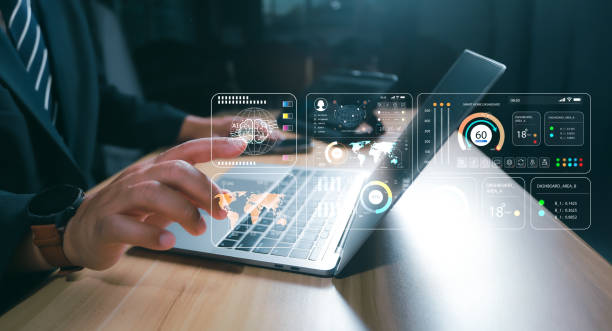
After conducting keyword research, the next step in the #On-Page SEO process is optimizing your text content.
Content is the beating heart of any website, and its quality significantly impacts your ranking in search results.
Your content should not only be optimized for search engines but also be engaging, useful, and readable for users.
This optimization includes naturally incorporating keywords into the text, using synonyms, and ensuring high readability and value of the content.
Avoid excessive keyword density (Keyword Stuffing), as this not only harms user experience but can also result in penalties from search engines.
Your content should be descriptive and guiding.
To optimize text, you must ensure that main keywords are used in the Title Tag, Meta Description, and Headings (H1, H2, H3…).
Additionally, the natural distribution of keywords throughout the body text helps search engines better understand the main topic of the page.
Using lists (like bulleted or numbered lists) and short paragraphs improves content readability.
Creating longer and more comprehensive content (usually over 1000 words) that fully covers a topic can also help your ranking, as Google prefers in-depth and specialized content.
In On-Page SEO, educational and specialized content is always a priority.
Using images and videos with appropriate Alt tags helps strengthen On-Page SEO and enriches your content.
Below is a table of key elements for On-Page SEO content optimization:
| Optimization Element | Description | Impact on On-Page SEO |
|---|---|---|
| Page Title (Title Tag) | The first thing a user and search engine sees. | Most significant impact on ranking and Click-Through Rate (CTR). |
| Meta Description | A brief summary of the page’s content. | Indirect impact on ranking, significant impact on CTR. |
| Headings (H1-H6) | Structuring content and highlighting important sections. | Helps the search engine understand the structure and topic. |
| Keyword Density | The number of keyword repetitions in the text. | Must be natural and spam-free. |
| Content Readability | Ease of understanding and reading the text for the user. | Improves user experience and reduces bounce rate. |
HTML Tags and Their Critical Role in On-Page SEO
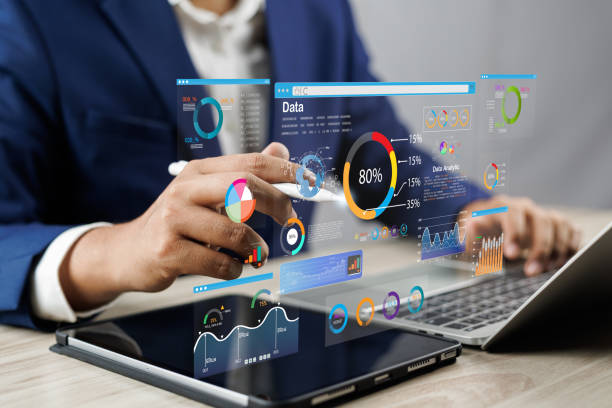
In addition to text content, technical HTML elements also play an important role in the success of #On-Page SEO.
These tags help search engines correctly understand and index your page’s structure and content.
Among the most important of these tags are the Title Tag, Meta Description tag, and Heading tags (H1-H6).
Do you know how each of these tags can help your On-Page SEO? The Title tag is the most important signal for search engines regarding the main topic of your page.
This tag should include the page’s main keyword, be concise, engaging, and less than 60 characters to be fully displayed in search results.
A strong title not only helps search engines but also encourages users to click.
The meta description tag, although not directly impacting ranking, plays a vital role in the Click-Through Rate (CTR).
These short descriptions, which appear below the title in search results, should provide an engaging summary of the page’s content and encourage users to click.
Using relevant keywords in the meta description also helps highlight your page in search results.
Heading tags (H1 to H6) help organize your content and give it a hierarchical structure.
The H1 tag is typically used for the main title of the page and should contain the primary keyword.
H2 and H3 tags are used for subheadings and help with text readability, providing more signals about sub-topics to the search engine.
This structured use of headings optimizes specialized and explanatory content.
This part of On-Page SEO requires technical precision and allows search engines to better crawl and index your text.
Adhere to HTML standards for more precise optimization.
Is your company’s website as professional and trustworthy as it should be? With specialized corporate website design by RasaWeb, create an online presence that represents your credibility and attracts more customers.
✅ Building a powerful and professional image for your brand
✅ Converting visitors into real customers
⚡ Get a free consultation now!
Image and Video Optimization for On-Page SEO and User Experience
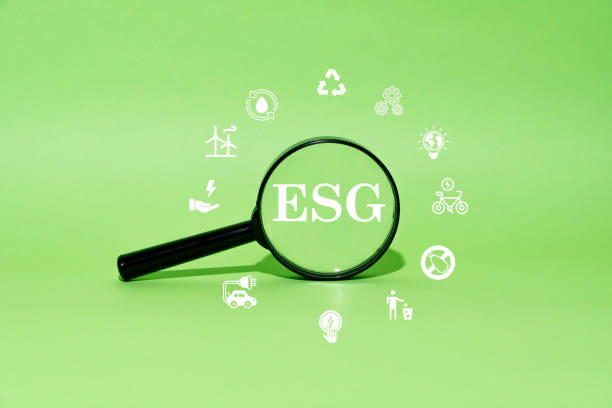
In today’s world, visual content like images and videos play a significant role in attracting audiences and improving user experience.
But did you know that these elements also require #On-Page SEO? Optimizing images and videos for search engines not only helps you appear in image and video search results but also contributes to search engines’ better understanding of your page’s overall content.
The first step in image optimization is using the Alt tag (Alternate Text).
The Alt tag provides a brief and accurate description of the image content, readable by search engines and users with visual impairments.
This tag should include keywords relevant to the image and page content.
In addition to the Alt tag, image file names are also important.
Instead of generic names like “IMG_1234.jpg”, use descriptive and keyword-rich names such as “women-athletic-shoes.jpg”.
Image file size is also an important factor in page loading speed, which directly affects On-Page SEO.
Using optimized image formats (like WebP) and compressing images without significant quality loss can help increase your site’s speed.
For videos, in addition to optimizing titles, descriptions, and tags, using video Schema Markup can help search engines better understand and display your video content.
Hosting videos on platforms like YouTube and then embedding them on your website can also help your On-Page SEO due to their high server speeds and authority.
This guiding and educational approach significantly helps increase the visibility of your content in search results.
Optimizing these elements not only strengthens your On-Page SEO but also improves user experience, which is itself an important factor in Google’s ranking.
URL Structure and Internal Linking: The Cornerstone of On-Page SEO

URL (Uniform Resource Locator) structure and internal linking are two other critical elements in #On-Page SEO that are often overlooked.
A good URL should be short, descriptive, and contain relevant keywords.
Clean and understandable URLs not only help search engines better understand the page’s topic but are also more trustworthy and memorable for users.
Avoid URLs with meaningless numbers and characters.
Instead of “yoursite.com/cat/page?id=123”, use “yoursite.com/shoes/running-shoes”.
This is an educational and guiding approach to URL improvement.
Internal Linking refers to creating links between different pages of your website.
This has several key benefits for On-Page SEO: Firstly, it helps search engines understand your site’s overall structure and discover and index new pages faster.
Secondly, it distributes authority and “Link Juice” throughout your site, giving more power to more important pages.
Thirdly, it improves user experience, as users can easily navigate between related content and gain more information, which leads to increased Dwell Time and reduced Bounce Rate.
When internal linking, use descriptive and keyword-rich Anchor Text.
For example, instead of “Click here,” use “On-Page SEO tutorial.”
This is a specialized strategy that directly impacts your On-Page SEO ranking.
A strong and logical internal link structure indicates an organized website and significantly helps increase the crawlability and indexability of pages by search engine bots.
These two elements are fundamental cornerstones for successful on-page optimization and should be carefully planned and implemented.
Page Loading Speed and Its Impact on On-Page SEO
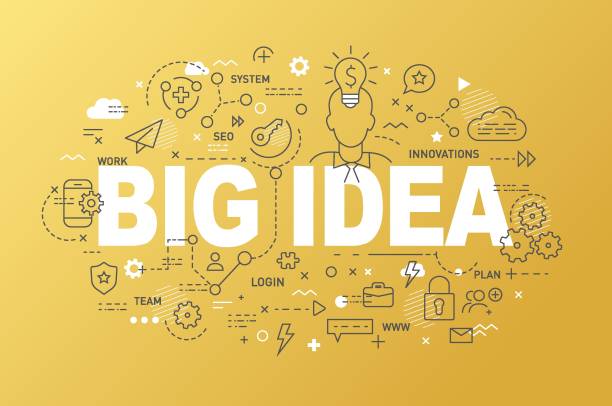
In the current era where everything moves fast, your website’s #page loading speed is considered one of the most important factors for #On-Page SEO and User Experience (UX).
Search engines like Google prefer websites that load faster and consider this a positive ranking signal.
Why is site speed so important? In addition to its direct impact on On-Page SEO, slow page loading speeds can lead to an increased Bounce Rate and reduced user engagement with your website.
Today’s users are impatient, and if a page doesn’t load within a few seconds, they will likely leave it and go to a competitor’s website.
This is a specialized and critical analysis.
Several factors can affect page loading speed, including: image and video file sizes, unorganized coding (CSS, JavaScript), use of inappropriate hosting, and lack of file compression.
To improve site loading speed, you can use techniques such as image compression, caching, code optimization (Minification), and using a Content Delivery Network (CDN).
Tools like Google PageSpeed Insights, GTmetrix, and Pingdom Tools help you evaluate your site’s speed and receive solutions for improvement.
Improving site speed not only helps your On-Page SEO but also directly and positively impacts user satisfaction and ultimately your website’s conversion rate.
Below is a table with key factors related to page loading speed and their impact on On-Page SEO:
| Speed Factor | Explanation | Impact on On-Page SEO |
|---|---|---|
| Image and Video Size | The larger the size, the slower the load. | Directly affects Core Web Vitals. |
| Compression (Gzip) | Reduces the size of CSS, JS, HTML files. | Significant improvement in initial loading speed. |
| Browser Caching | Stores data for subsequent visits. | Improved speed for repeated visits. |
| Optimized Coding (Minification) | Removes empty spaces and extra characters. | Reduces download time for CSS/JS files. |
| Content Delivery Network (CDN) | Distributes content from the closest server. | Reduces Time To First Byte (TTFB). |
User Experience (UX) and Its Close Relationship with On-Page SEO

Today, the line between #User Experience (UX) and #On-Page SEO has become increasingly blurred.
Google and other search engines are increasingly emphasizing user experience-related factors for website ranking.
But how exactly is this relationship? User experience, in short, means how easily and enjoyably users can interact with your website.
Factors like Responsive Design, easy navigation, readable and engaging content, and high Dwell Time all contribute to a good user experience.
Search engines receive positive signals from a good user experience in the form of metrics such as low bounce rate, high dwell time, and high Click-Through Rate (CTR).
A website with poor UX, even if technically optimized for On-Page SEO, may not achieve a good ranking in the long run.
This is because users quickly leave it, and this sends a negative signal to search engines.
Therefore, investing in User Interface (UI) and User Experience (UX) design is essential for improving On-Page SEO.
Ensure that your website displays well on all devices (mobile, tablet, desktop) (Mobile-first Indexing).
Navigation should be intuitive and simple so users can easily find what they are looking for.
Your content should be well-organized and readable, using short paragraphs, headings, and lists.
Using clear and logical Call-to-Actions also helps guide users on the site.
This analytical and guiding approach shows you how On-Page SEO and UX complement each other.
Google, by introducing Core Web Vitals, has placed more emphasis on page experience, which includes metrics such as loading speed, interactivity, and visual stability.
All of these are directly tied to a positive user experience and indirectly affect your On-Page SEO and ranking.
Are you tired of your company’s website not meeting your expectations? With RasaWeb, design a professional website that showcases the true face of your business.
✅ Increase new customer acquisition and sales leads
✅ Increase your brand’s credibility and trust with the audience
⚡ Get a free website design consultation!
Reviewing and Analyzing On-Page SEO Performance for Continuous Improvement
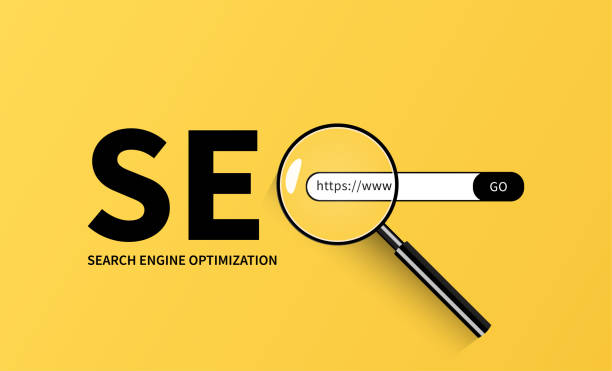
Implementing #On-Page SEO is just the beginning; another crucial part is continuous performance review and analysis.
Without regular monitoring, you cannot understand which strategies have been effective and which need optimization.
Analytical tools like Google Search Console and Google Analytics are among the most essential tools for any SEO specialist.
Google Search Console helps you view your website’s performance in search results, including keywords users used to find you, the number of clicks, impressions, and average position.
Additionally, this tool reports technical issues such as Crawl Errors and indexing problems, which are crucial for On-Page SEO.
Google Analytics provides more detailed information about user behavior on your website, such as bounce rate, dwell time, user paths, and conversions.
By analyzing this data, you can identify the strengths and weaknesses of your On-Page SEO and adjust your strategies accordingly.
For example, if the bounce rate on a specific page is high, it might need improvements in content, readability, or loading speed.
Using third-party tools like Ahrefs or Semrush can also help you analyze competitors, discover new keywords, and review internal and external link profiles.
This is specialized and analytical content that allows you to make data-driven decisions.
Periodic On-Page SEO reports, including keyword rankings, organic traffic, and Core Web Vitals improvements, are essential for monitoring progress and justifying investment in this area.
These analyses provide a comprehensive view of the effectiveness of your On-Page SEO efforts and pave the way for future improvements.
By continuously reviewing, you can leverage the full potential of your On-Page SEO and optimize your online presence.
New Trends and the Future of On-Page SEO: New Perspectives
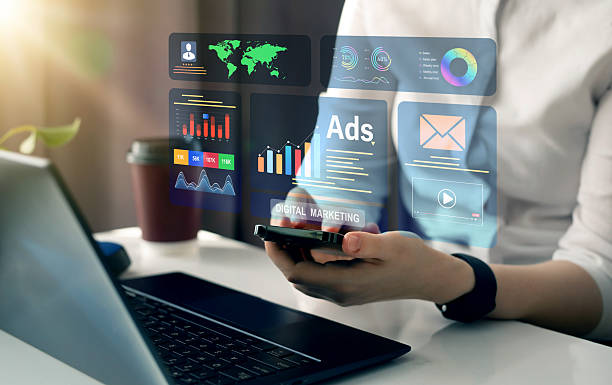
The world of #SEO is rapidly changing, and to succeed in #On-Page SEO, you must always keep up with the latest trends and future predictions.
What does the future hold for On-Page SEO? One of the most important trends is the increasing importance of Artificial Intelligence (AI) and Machine Learning in Google’s algorithms.
This means that search engines understand not only keywords but also the user’s search intent better.
Therefore, producing comprehensive, relevant, and high-quality content that fully addresses user needs becomes even more important.
This is news and engaging content that challenges the mind.
Voice Search is also growing and impacts how keywords are optimized for On-Page SEO.
Users typically use more natural and longer (Long-tail) phrases in voice searches.
Therefore, optimizing content to answer common questions and using conversational language can help with visibility in voice search results.
Video content and podcasts are also growing in popularity, and optimizing these formats (using Schema Markup, subtitles, and rich descriptions) is highly important for On-Page SEO.
Mobile-First Indexing remains a key factor, and your website must be fully responsive and optimized for mobile.
Optimizing for Core Web Vitals is not just a trend but a necessity for On-Page SEO.
With technological advancements and changing user behavior, On-Page SEO is also evolving, and those who can adapt to these changes and provide content beyond user expectations will win this competition.
This analytical and thought-provoking perspective helps you prepare for the future of On-Page SEO and always stay one step ahead.
Frequently Asked Questions
| No. | Question | Answer |
|---|---|---|
| 1 | What is On-Page SEO? | On-Page SEO refers to a set of actions performed within a website to optimize its pages for better ranking in search results. |
| 2 | What is the most important factor in On-Page SEO? | High-quality, relevant, and comprehensive content that addresses user needs is the most important factor in On-Page SEO. |
| 3 | What role does the Title Tag play in On-Page SEO? | The Title tag is one of the most important factors that tells search engines and users what the page content is about. It should include the main keyword and be engaging. |
| 4 | How important is the Meta Description tag? | Although it doesn’t directly affect ranking, it is very effective for the Click-Through Rate (CTR) in search results and encourages users to visit the page. |
| 5 | How is image optimization done in On-Page SEO? | By using appropriate alt tags, compressing image size to increase loading speed, and meaningfully naming the image file. |
| 6 | What is the importance of using headings (H1, H2, H3) in On-Page SEO? | Headings help structure content, increase readability, and assist search engines in understanding the hierarchy and sub-topics of the content. |
| 7 | What is Internal Linking and what are its benefits? | Internal linking means creating links between different pages of a website. This helps distribute authority, improve user navigation, and assist search engine crawling. |
| 8 | Where should the Focus Keyword be placed on the page? | The main keyword should be placed in the title tag, meta description, H1, the first paragraph, and naturally throughout the text, and if possible, in the URL. |
| 9 | What impact does duplicate or copied content have on On-Page SEO? | Duplicate content can harm site ranking and confuse search engines about which version is original, and they might classify it as spam. |
| 10 | How important is page loading speed in On-Page SEO? | Page loading speed is an important ranking factor and directly impacts user experience. Slow pages lead to increased bounce rates for users. |
And other services of RasaWeb Advertising Agency in the field of advertising
Smart Customer Journey Mapping: A professional solution for increasing website visits, focusing on SEO-driven content strategy.
Smart Conversion Rate Optimization: A specialized service for online growth based on real data utilization.
Smart UI/UX: A fast and efficient solution for user interaction, focusing on attractive user interface design.
Smart Marketing Automation: A specialized service for increasing customer acquisition based on marketing automation.
Smart Website Development: A combination of creativity and technology for customer acquisition through optimizing key pages.
And over hundreds of other services in the field of internet advertising, advertising consultation, and organizational solutions
Internet Advertising | Advertising Strategy | Advertorial
Resources
How to Do On-Page SEO?
On-Page SEO Tutorial
Importance of On-Page SEO
Professional On-Page SEO Techniques
? Are you ready for your business to shine in the digital world? “RasaWeb Afarin”, a leading digital marketing agency, is your guide to achieving online success by providing comprehensive services including professional WordPress website design, SEO, and content marketing.
📍 Tehran, Mirdamad Street, next to Bank Markazi, Southern Kazeroon Alley, Ramin Alley, No. 6

